Find Your Fit
Packrafts should be fitted to your seated leg length, not your standing height. These measurements are obviously related, but some people have long legs and short torsos while others have short legs and long torsos, so your height isn’t the best way to choose the right packraft size.
To find your seated leg length, sit on the floor with your back against a wall and your legs straight out in front of you. Measure the distance between the wall and the bottom of your feet, and then add the thickness of whatever footwear you’ll use when paddling.
Example: I have shorter than average legs and when I sit against a wall, my feet stick out about 105-110 cm (41-44 inches), depending on how tightly I slide my butt against the wall.
When I paddle with straight legs in the smaller sized DIY Packrafts (the 120 cm / 47″ size) there’s usually about 5 cm (2″) of room between my shoes and the front of the cockpit if the backrest is leaning against the rear tubes. If I’m using the back band and thigh straps in the same packraft, my feet press against the front of the cockpit when my knees are bent.
DIY Packraft Sizes
First, the DIY Packraft sizes should not be confused with Small, Medium, and Large. In the past I offered shorter options, but for whatever reason nobody bought them and people were always asking for larger packrafts, so that’s why the DIY Packrafts are now sized the way they are. As one customer put it, the current sizes could be called Large, Extra Large, and Extra-Extra Large.
Second, due to the packraft’s shape, some of the cockpit length won’t accommodate a human body (see the diagram below). The actual internal length is about 15 cm (6″) longer than advertised.
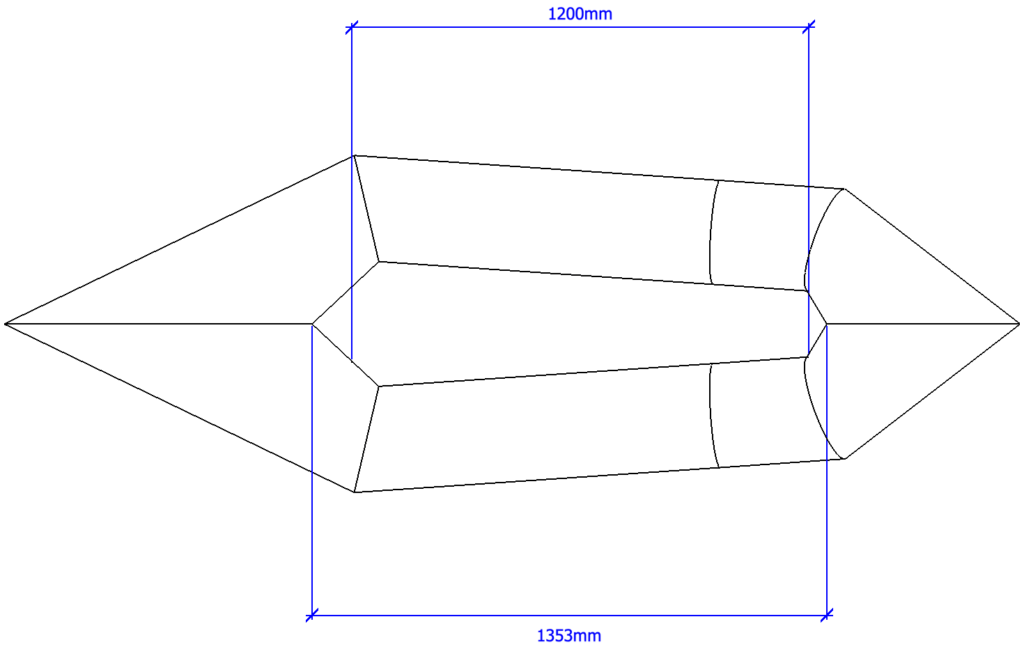
When deciding which DIY Packraft size to order, note that the difference in length between the Atlin sizes is 12.5 cm (5″), while the Telkwa and Skeena sizes differ by 10 cm (4″) each.
The largest single-person DIY Packraft is currently the 145 cm (57″) Atlin.
The Ultralight DIY Packraft is only available in one size, with a 130 cm (51″) internal length, which is long enough for most people to sit comfortably with legs straight.
Back Band vs. Backrest
A packraft’s perceived internal length also changes depending on whether you use a back band or a backrest.
The standard weight single-person DIY Packraft kits now include a convertible back band/backrest so you can use it in either configuration, adapting it to whatever type of paddling you’re doing.
To be clear, the “backrest” and “back band” are the same thing, just used in different ways.
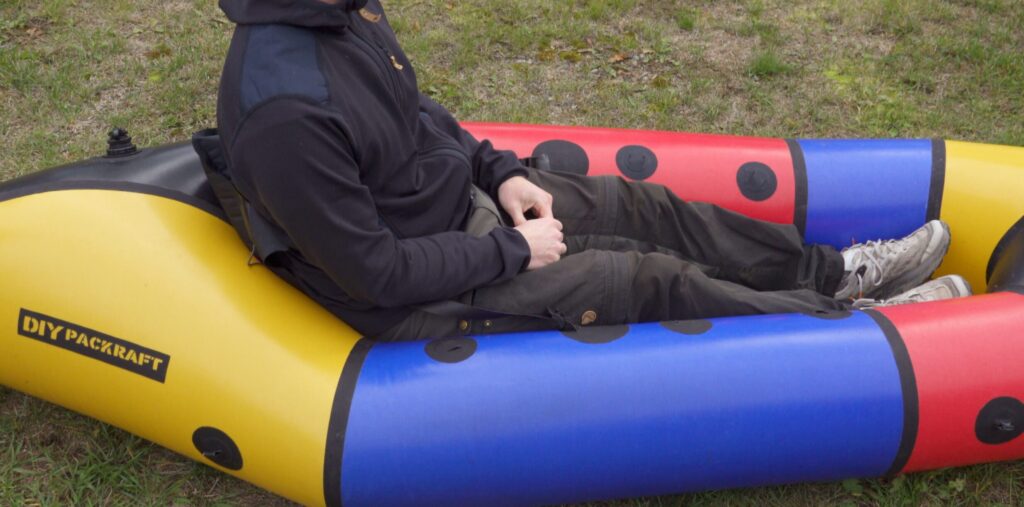
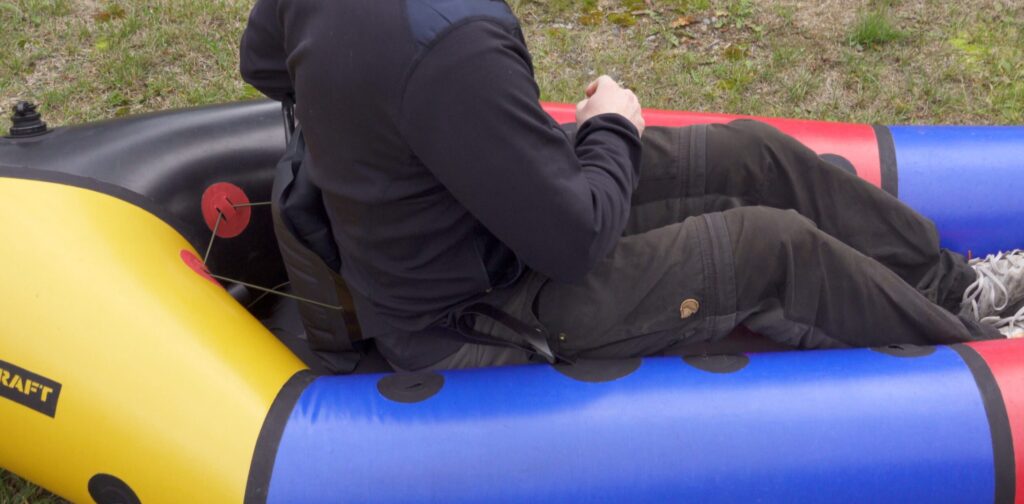
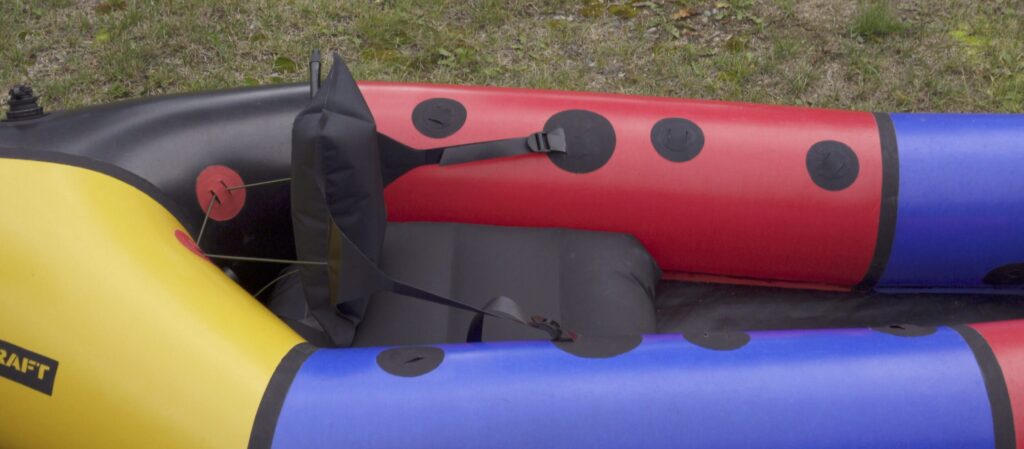
Whitewater paddlers typically use a back band and thigh straps so they can paddle more aggressively and control their boat with a flick of their hips. The forward seating position of a back band also balances the packraft better fore and aft.
Moving your butt forward with a back band will be offset somewhat with the use of thigh straps, because bending your knees pulls your feet backwards.
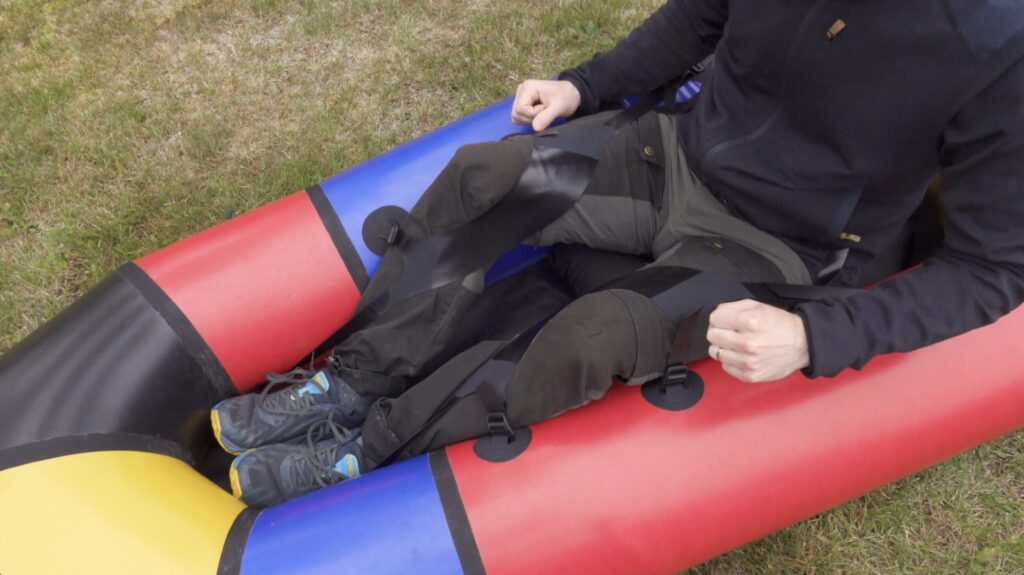
Mission Type
If you plan to spend hours on the water paddling long distances, choose a packraft with an internal length that’s long enough to allow you to straighten your legs when seated.
If you’re primarily a whitewater paddler (or aspire to be one), you will prefer to paddle with a back band and thigh straps over bent knees while pushing your feet against a foot rest for maximum power and manoeuvrability; in that case, choose a shorter packraft. Shorter packrafts also flex less than longer ones.
You can always make a longer boat feel shorter placing something in front of your feet to push against. You can’t make a short boat feel longer though, so if in doubt, size up.
Can the length of a DIY Packraft be modified?
The short answer is no. To see why, click here.
2 Comments
Alex · July 16, 2023 at 5:01 am
Hi All,
I am wanting to buy a Telkwa pack raft, I am going to be doing a mixture of trips, whitewater, camping and I am not sure what length to get. My feet are about 120cm from the wall when I do the sit test (full height 181cm), I am thinking that I should go for the 140cm length as this will allow me to put a bag or equipment up front if camping. If I am using it for whitewater, I could use thigh straps and put a dry bag in the front to put my feet against. Is this sound logic or is this not a good idea and I should go for a shorter raft?
Matt (Admin) · July 16, 2023 at 9:53 am
That seems reasonable to me!